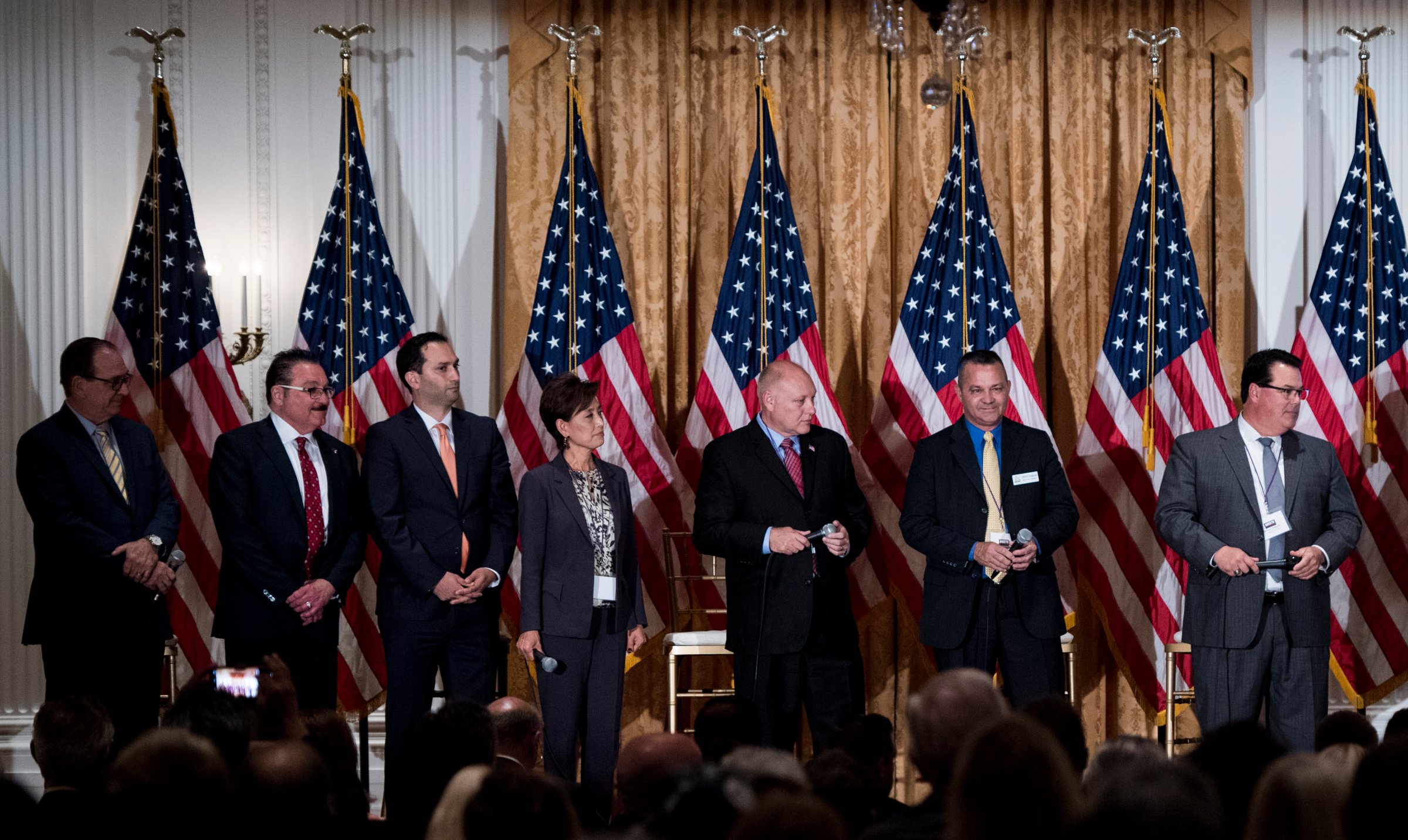
By all accounts, Tuesday’s primaries in California should be a walk in the park for Democrats. Instead, they’ve become something of a brawl, with the potential to ruin the party’s chances of taking back the House.
Theoretically, California should be the state that leads the Democrats’ charge to power on Capitol Hill. Democrats only need 23 seats to take back the House majority next year, and the Democratic Congressional Campaign Committee has targeted 10 it wants to pick up in California alone, based largely on the fact that half of the 14 districts currently controlled by Republican Congressman in that state voted for Hillary Clinton in 2016.
But in three of these targeted districts, the 39th and 49th districts, where Reps. Ed Royce and Darrell Issa are retiring, and the 48th district, where Rep. Dana Rohrbacher is running for a 16 term while plagued by controversial ties to Russia, Democratic enthusiasm could end up hurting them.
Since 2010, California has operated on a “top two” primary system; all primary candidates are on the same ballot regardless of party affiliations, and the top two candidates advance to the general election regardless of party affiliation. Consequently, in these three districts, where multiple Democratic candidates are vying against each other, they can split the votes in a way that enables their Republican counterparts to surpass them.
“Because of the top two primary, coupled with the fact that there has a been a very high level of Democratic enthusiasm in some of these targeted districts, that we’ve seen more candidates step in than we have in the past – there are some doomsday scenarios in which Democrats get shut out of the ballot,” said Brian Brokaw, a Democratic strategist in California. “If that were to happen that would be damaging to the overall equation to Democrats needing to retake the House.”
Democratic officials dispute that losing these races could cost them the House, pointing to the 104 Republican districts they have targeted across the country. But their actions – and millions of dollars Democratic groups have on these races — are speaking louder than their words.
In Rohrbacher’s district, the 48th, which Democrats view as the one most vulnerable to a shut-out dynamic, the DCCC announced last month that it would back Harley Rouda, a businessman who used to be a Republican, angering the state’s Democratic Party, whose delegates had endorsed another Democrat, stem-cell scientist Hans Kairstead.
In Royce’s district, the 39th, where there are six Democrats running in the primary, the California Democratic Party chairman Eric Bauman had to broker a truce last month between two of them, Gil Cisneros and Andy Thorburn, to stop them from campaigning against each other after the attacks became increasingly negative. (The DCCC is backing Cisneros). In the 49th district, the third one where Democrats are fearful of a shut-out, things are a bit less dramatic; Democrats are a bit more confident one of their four candidates on the ballot will prevail, although not confident enough to rule out the possibility it could still happen. “We see voter turnout looking good [in CA-49]” said one Democratic strategist who requested anonymity to discuss the data.
And turnout, of course, is another component that could make or break the party’s efforts to end up on the ballots for these districts in November. Even though nearly half of all registered voters in California identify themselves as Democrats — just a quarter identifies as Republicans — turnout in the state’s primaries among registered voters in 2014 was 25 percent, according to government data. If Democrats want to prevail in these three districts, they will likely need more than that. This is why groups like Democratic megadonor Tom Steyer’s organization NextGen Rising spent this past week promoting voter turnout in specific districts like these.
“We have tried to do a get out the vote effort over the last couple of weeks to try and get as many people to the polls as possible,” Steyer said Monday. “We made the decision that the way we could try to counter a structural problem in the way California elections are set up is by going for more participation by voters, especially young voters.”
“We understand this issue. It is one that is not of our making so we are trying to do the most Democratic grassroots reaction that will be as effective as possible,” Steyer added.
Brokaw, the California strategist, predicted that turnout would be low overall across the state, but would be higher in these three districts — which is why he thinks concerns about Democrats getting shut out ultimately might be overblown. “This may end up being a moot scenario when all the votes are tallied,” he said.
These sentiments were similar to the threads of optimism Democratic strategists were trying to grasp on the eve of the primary.
“I feel better about things now then I did just a couple weeks ago, just on the data I’ve seen” said another Democratic strategist, who also requested anonymity to speak freely about the state of the races. “That said, I’m not ready to get cocky about any of those three. There is still a degree of volatility and unpredictability.”
More Must-Reads from TIME
- Where Trump 2.0 Will Differ From 1.0
- How Elon Musk Became a Kingmaker
- The Power—And Limits—of Peer Support
- The 100 Must-Read Books of 2024
- Column: If Optimism Feels Ridiculous Now, Try Hope
- The Future of Climate Action Is Trade Policy
- FX’s Say Nothing Is the Must-Watch Political Thriller of 2024
- Merle Bombardieri Is Helping People Make the Baby Decision
Write to Alana Abramson at Alana.Abramson@time.com